12 Product Management Trends That Are Here to Stay

Product management has evolved from a support function into a core business function that drives strategy, growth, and innovation. Over the past decade, product managers have taken on defining customer journey KPIs, shaping pricing and monetization strategies, and aligning roadmap priorities across engineering, marketing, sales, and customer success.
A report by ProductPlan found that over 80% of product managers have either “some” or “a lot” of influence over product messaging and marketing. One reason behind this increased influence is the rise of product operations (product ops), a function designed to streamline processes, improve cross-team communication, and enable PMs to focus on high-impact work.
Similarly, about one-third of companies in the report stated that they have a dedicated product operations team supporting product efforts. With product ops, you gain more autonomy, trust your peers more, and move in a clearer direction.
But not every shift in responsibility reflects a long-term trend. Some changes look promising but fade fast. So, how do you focus on what lasts?
This article breaks down the latest product management trends and practices shaping high-performing teams across industries.
Suggested read: 👉What is Agile Project Management?
7 core product management trends that will shape 2025
Looking ahead, several powerful market trends and new technologies are set to redefine how product teams operate. Below, we’ll explore the key trends shaping the future of product management—and how team leads and managers can harness them effectively using tools like Meegle to gain a competitive edge.
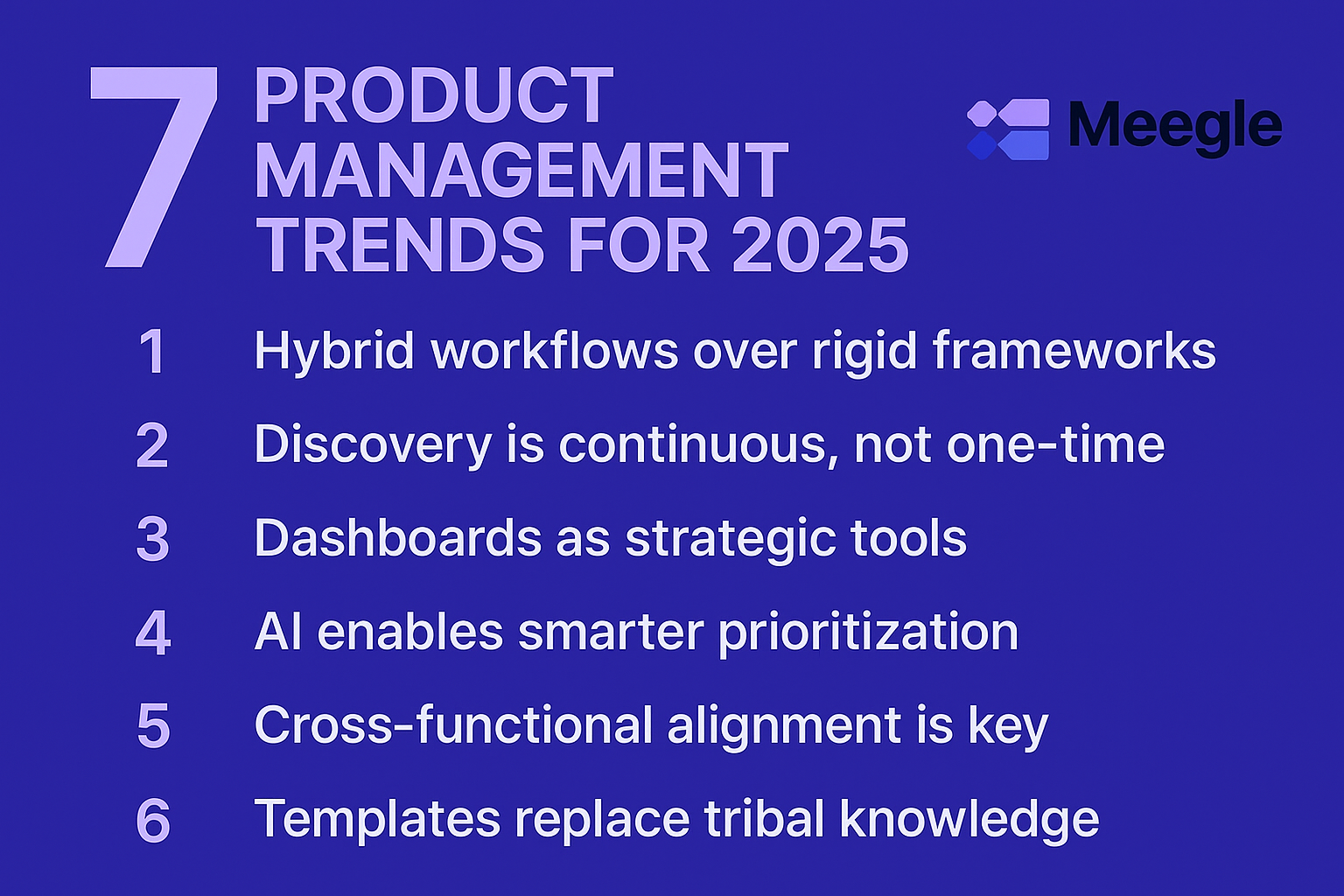 7 product management trends in 2025
7 product management trends in 20251. From rigid frameworks to hybrid workflows
Agile and Waterfall are often framed as two opposing methods competing for dominance in product development. Waterfall prioritizes predictability by locking in features upfront and considering a project complete only when all planned elements have been delivered. In contrast, Agile focuses on adaptability, starting with a minimum viable product (MVP) and evolving it through continuous updates shaped by user feedback and shifting needs.
But in practice, product teams rarely stick to one extreme. Most operate in hybrid workflows that combine the structure of Waterfall (to meet compliance deadlines or hardware dependencies) with the adaptability of Agile (to respond quickly to user needs and market shifts). At the same time, they also test new ideas, ship updates fast, and adapt based on feedback.
That’s why 2025 pushes teams toward hybrid workflows that borrow from Agile, Scrum, Kanban, and Waterfall without following any one framework rigidly. Methodologies like Scrum and Kanban structure these hybrid workflows, with Scrum defining sprint cycles and roles, and Kanban bringing visibility through visual boards that streamline task flow.
Meegle is built for this exact reality. As organizations move beyond rigid frameworks, Meegle’s features support hybrid approaches that balance flexibility with accountability. It visualizes workflows that seamlessly combine Agile elements, such as sprints, with Waterfall milestones, including review gates and approvals, fully tailored to your product lifecycle.
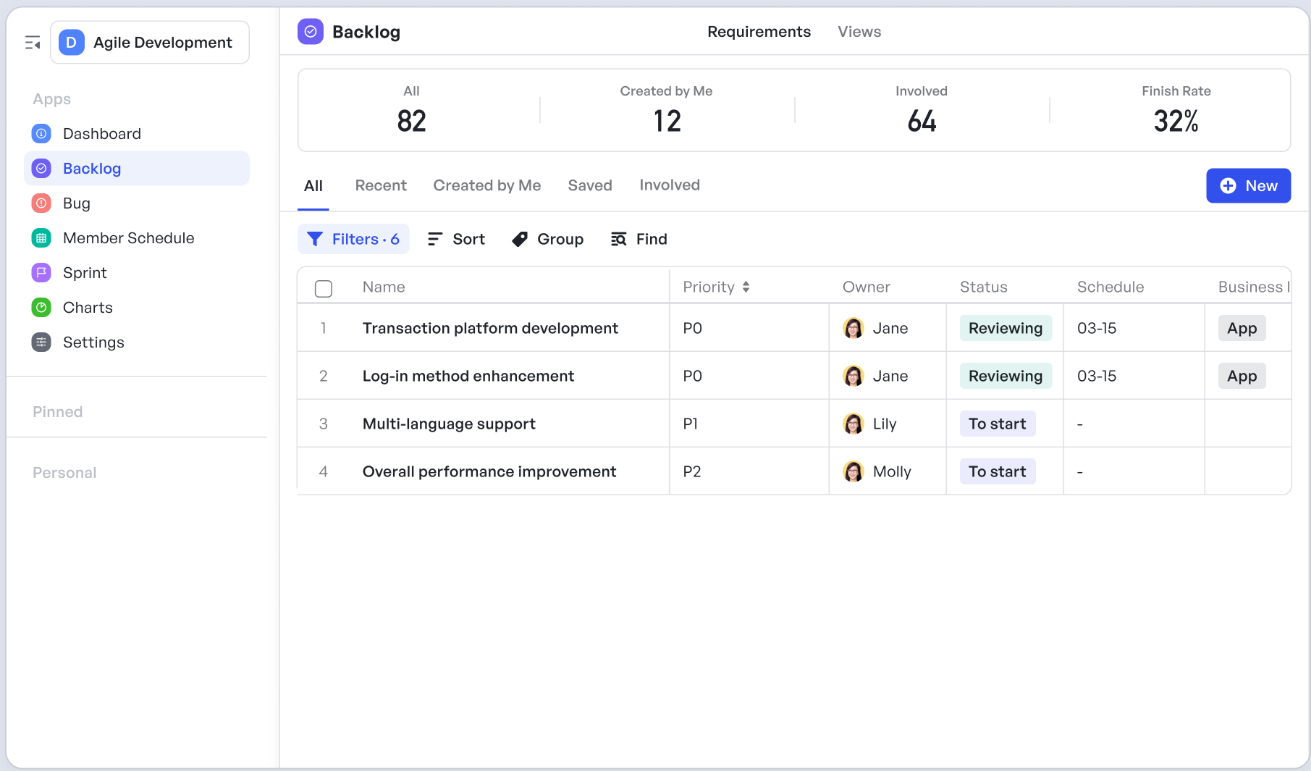 Manage tasks, schedule work, track progress, and view real-time performance insights with Meegle’s Agile Development Template
Manage tasks, schedule work, track progress, and view real-time performance insights with Meegle’s Agile Development TemplateMeegle supports this approach with a comprehensive Agile management template that includes:
- Epics, Stories, and Sprints
- Task management and scheduling
- Progress tracking and real-time metrics analysis
- Data analysis for performance insight
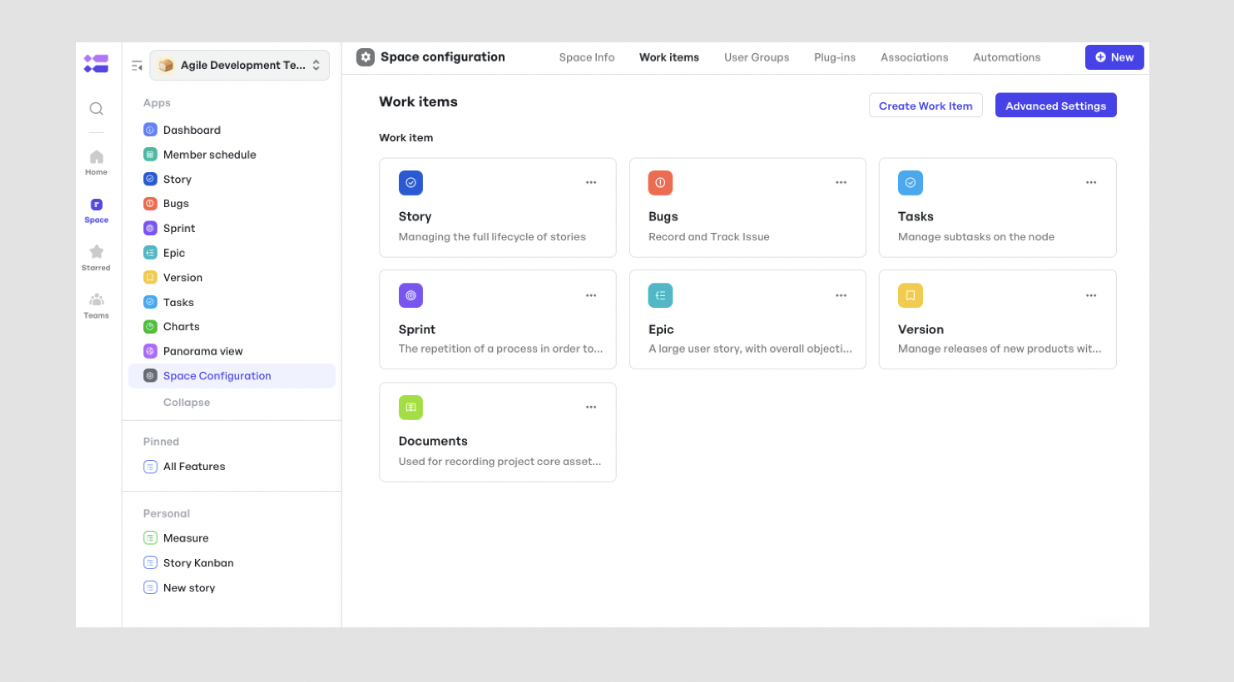 Create a product roadmap with Meegle’s Work Items feature
Create a product roadmap with Meegle’s Work Items featureWith Meegle’s Work Items feature, you organize your backlog, build product roadmaps, and manage each phase without losing clarity or control.
You track real-time progress with custom Kanban boards that reveal blockers before they slow down your team. You also schedule tasks with built-in tools that connect directly to execution, not just planning.
2. Outcome-driven roadmaps over feature-focused planning
Too often, teams build roadmaps around delivering a list of features rather than solving real user problems. This approach measures progress by what has been shipped, not what has been achieved. But the most product-led teams are realizing that feature completion doesn’t always equate to value delivered and may not provide a competitive edge.
Meegle’s OKR management solution facilitates this transition by enabling teams to set, manage, and achieve strategic objectives and key results (OKRs). In fact, the OKR impact report by Mooncamp indicated that nearly 60% of companies adopt OKRs as part of broader transformation initiatives, primarily to improve strategic execution.
For example, instead of planning to "add a new chat feature," a team might set an objective to "increase user engagement by 20% in the next quarter" and identify key results such as "launch chat feature" and "achieve 30% adoption rate." That mindset repositions the roadmap not as a to-do list of features but as a strategic tool that aligns product work with broader organizational goals, including customer acquisition.
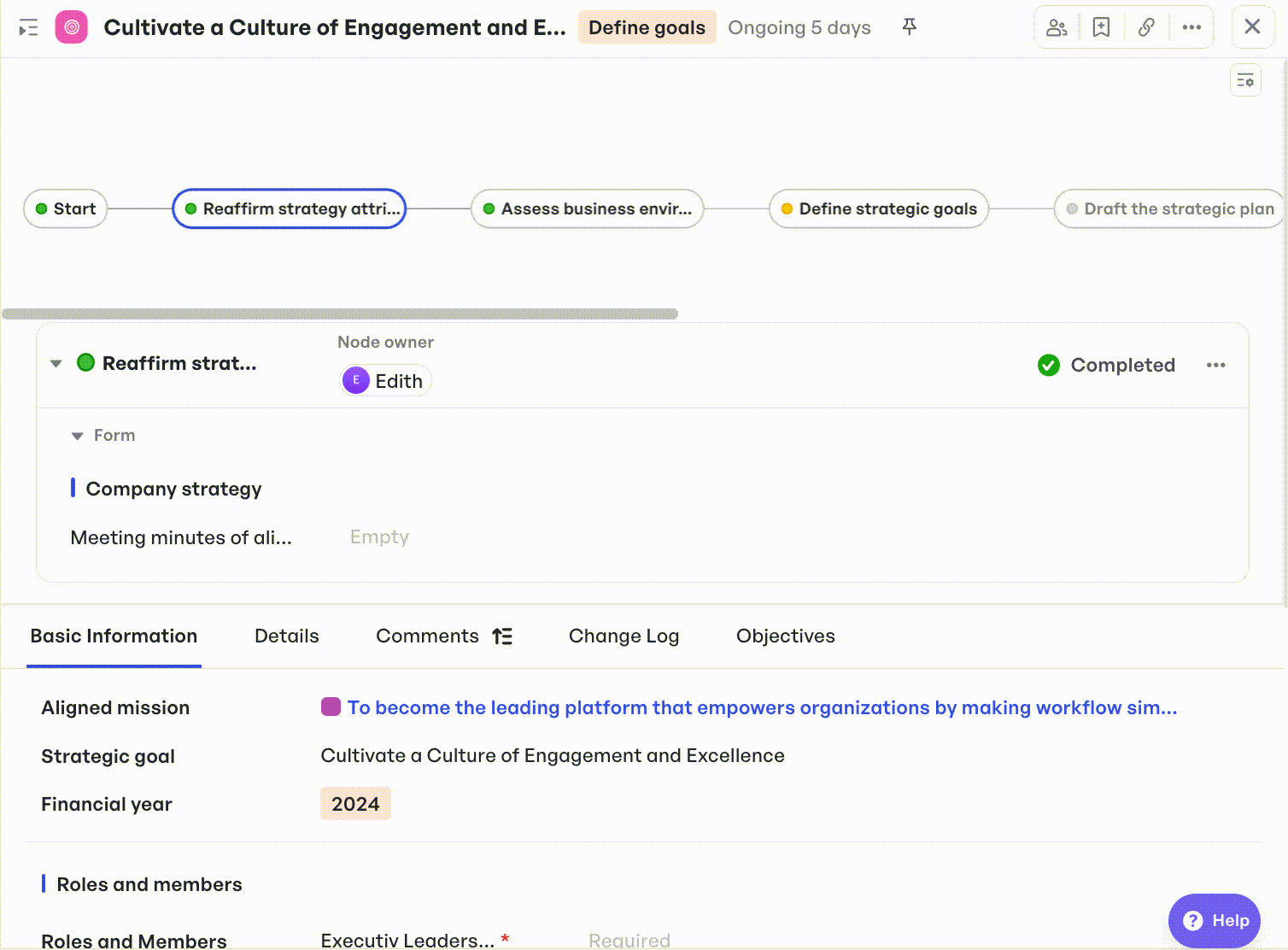 Set up project milestones and define product goals
Set up project milestones and define product goalsThe first step in creating a roadmap is to set clear, outcome-focused business objectives. You might want to capture a new market, increase user retention, or introduce a feature that shifts user behavior. These goals give your roadmap structure and purpose.
Related read:👉 7 Product Roadmap Examples to Guide Your Strategy
With Meegle's Table View feature, you can map each goal against specific deliverables and timelines. You see everything in one place, so you track progress and identify gaps quickly. Every update comes in real time, which keeps your team focused and avoids missed steps.
If you want to define high-level strategic goals, use Meegle’s OKR template to break them into measurable outcomes that guide your next set of initiatives.
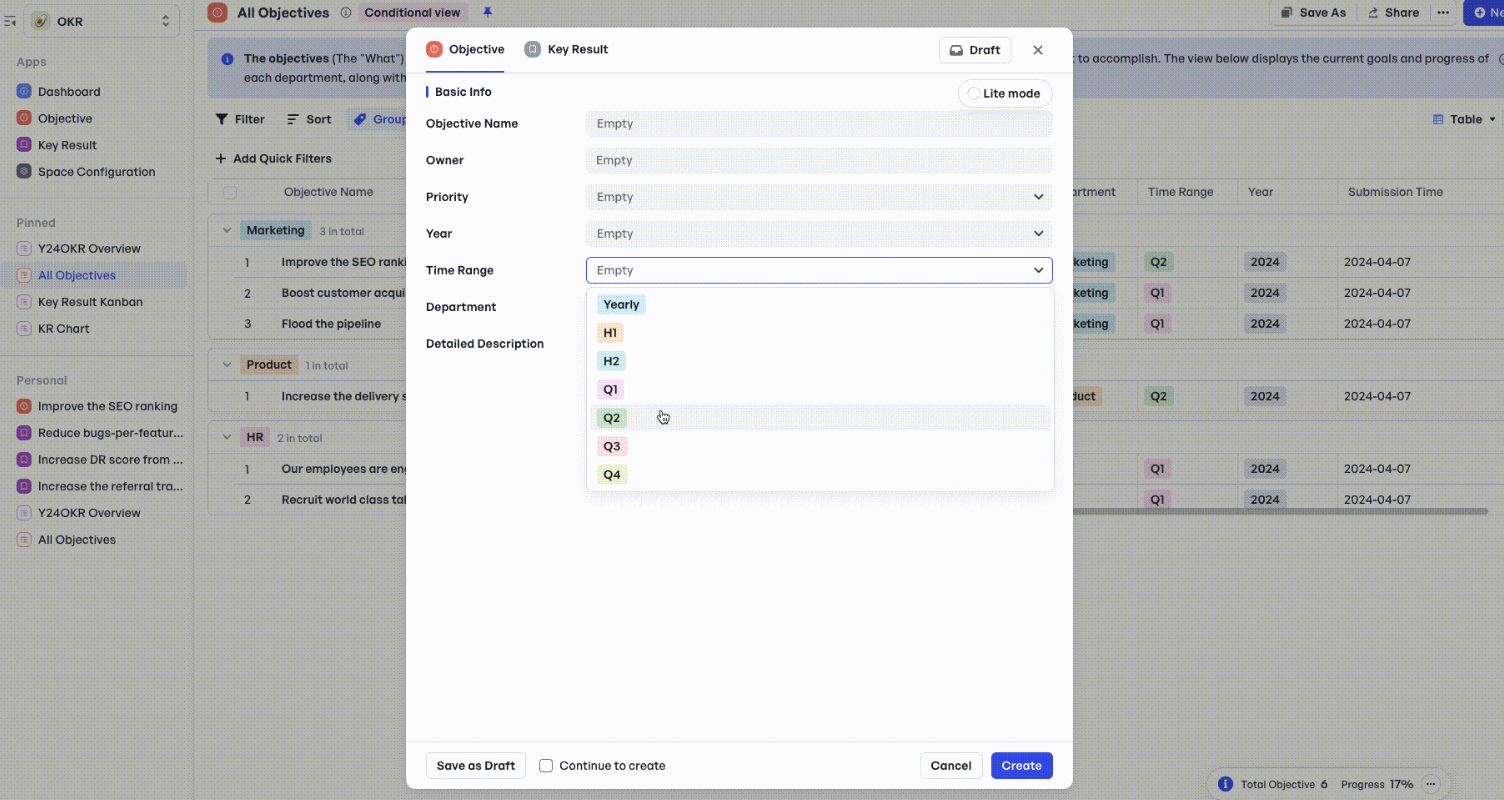 Create an objective by following these steps: Navigate to the Objective section → Click New Objective → Fill out the detail page
Create an objective by following these steps: Navigate to the Objective section → Click New Objective → Fill out the detail pageTo get started, navigate to the Objective section from the side navigation and click New Objective. After filling out the objective detail page, you can break it down into multiple key results (KRs) using the Key Results tab. This makes large objectives more manageable and easier to track.
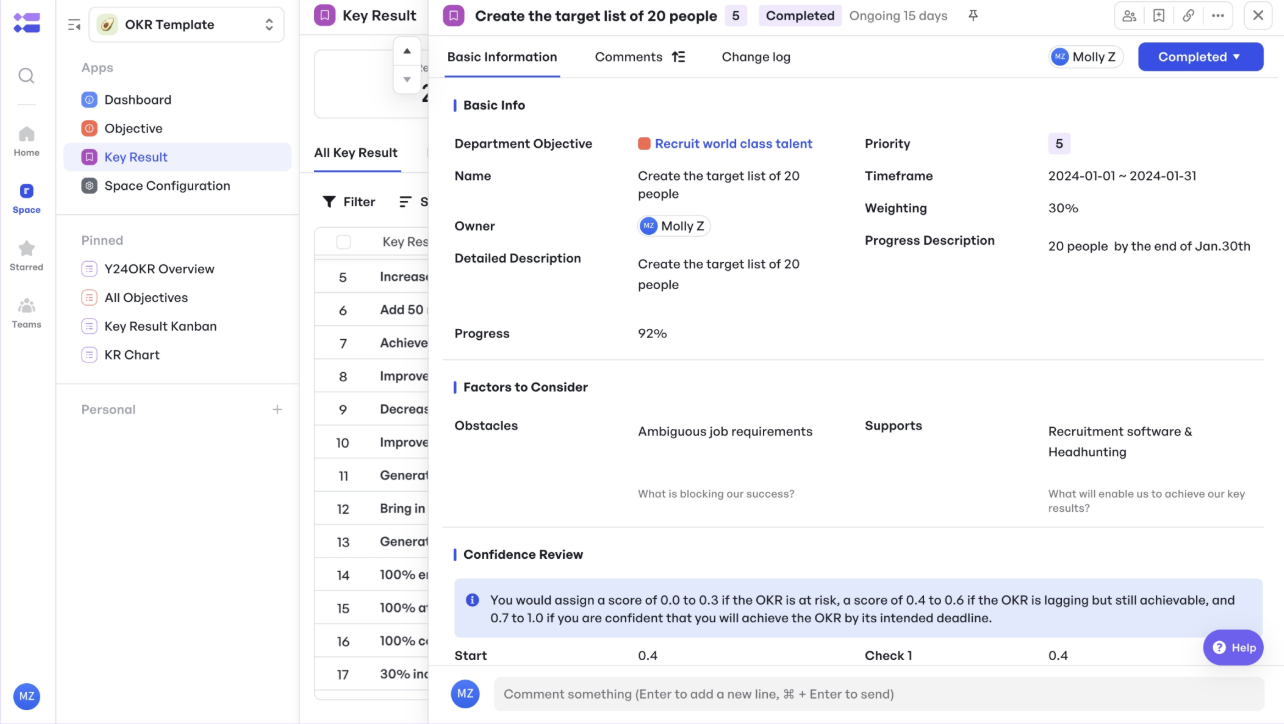 Monitor progress, assess factors, and apply confidence and weighted scoring to each KR
Monitor progress, assess factors, and apply confidence and weighted scoring to each KROnce the KRs are defined, Meegle allows you to begin the tracking process. You can enter basic information, monitor progress, analyze influencing factors, and apply both confidence tracking and weighted scoring to each KR. These features ensure a comprehensive view of how each objective is progressing.
Suggested read:👉 7 Top Roadmap Tools for Product & Project Success in 2025
3. Product discovery is no longer one-and-done
There was a time when product teams relied on gut instinct or executive opinion to drive informed decisions.
You probably recognize some of these examples:
- A sales team pushing a feature based on one big client
- A PM following their gut
- A loud voice dominating sprint planning
- Someone mimicking a competitor’s latest feature drop
Although these voices add some perspective, they ignore the most critical input in the product development process—the customer.
You still need discovery to involve users in early product ideation and validate your direction before you write a single line of code. You achieve this through practical techniques such as user research, customer interviews, usability tests, product analytics, rapid prototyping, surveys, and content testing.
Traditionally, product discovery is the first step in the development process. After gathering users’ needs, pains, and desires, you move to the delivery stage, confident you're building something users want.
But a digital product is never truly finished, so discovery must continue even after you start delivering your validated product. Continuous product discovery helps you build a habit of gathering insights without treating feedback as a one-off task.
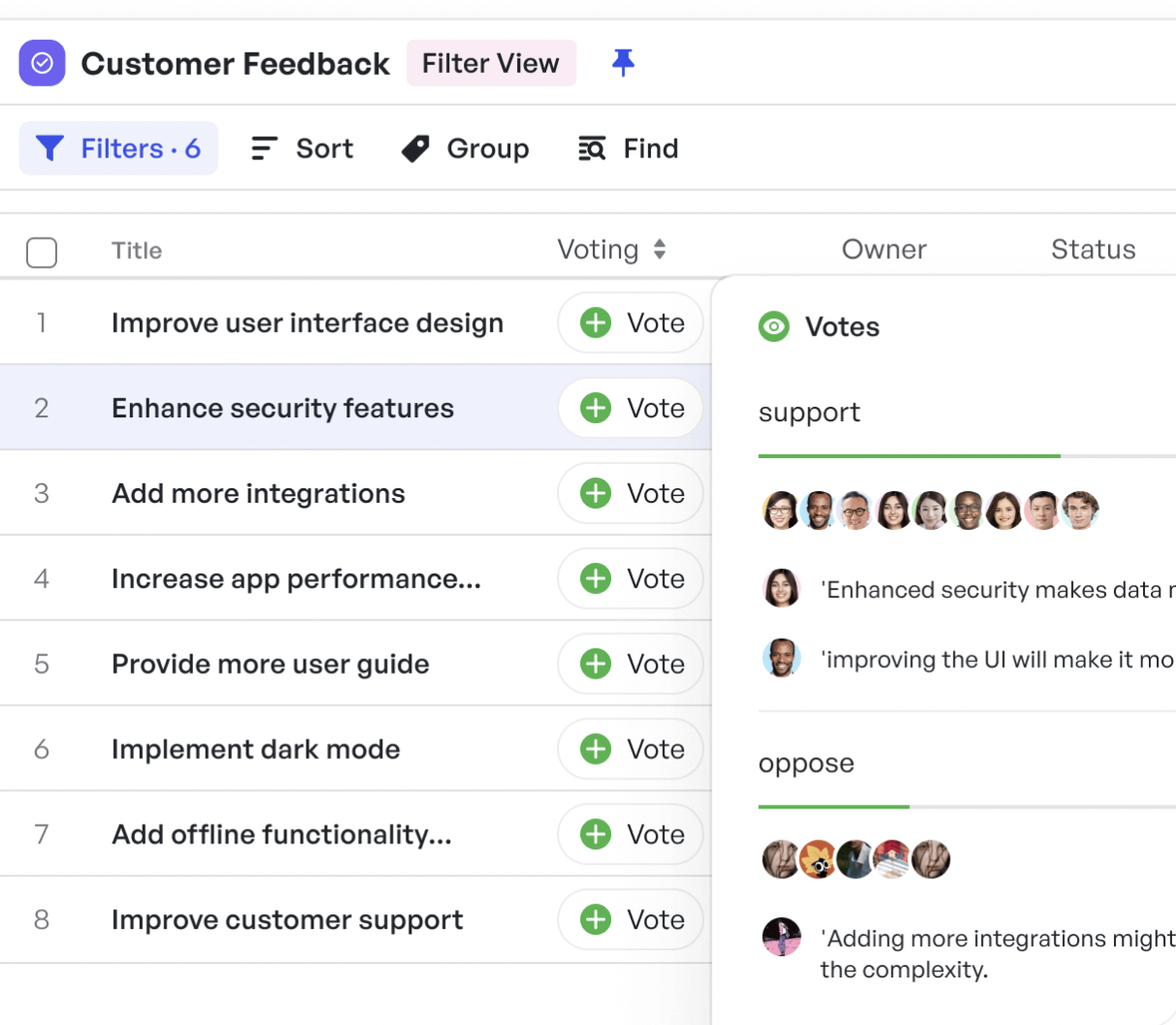 Collect and manage customer feedback in one place
Collect and manage customer feedback in one placeWith Meegle, you can gather and organize customer feedback in one place, without losing track of anything important. You can store every input in a central location where your team can add comments, vote on ideas, and collaborate with full context.
This collaborative approach provides product managers with a deep understanding of user needs through direct, structured input, rather than relying on secondhand guesses.
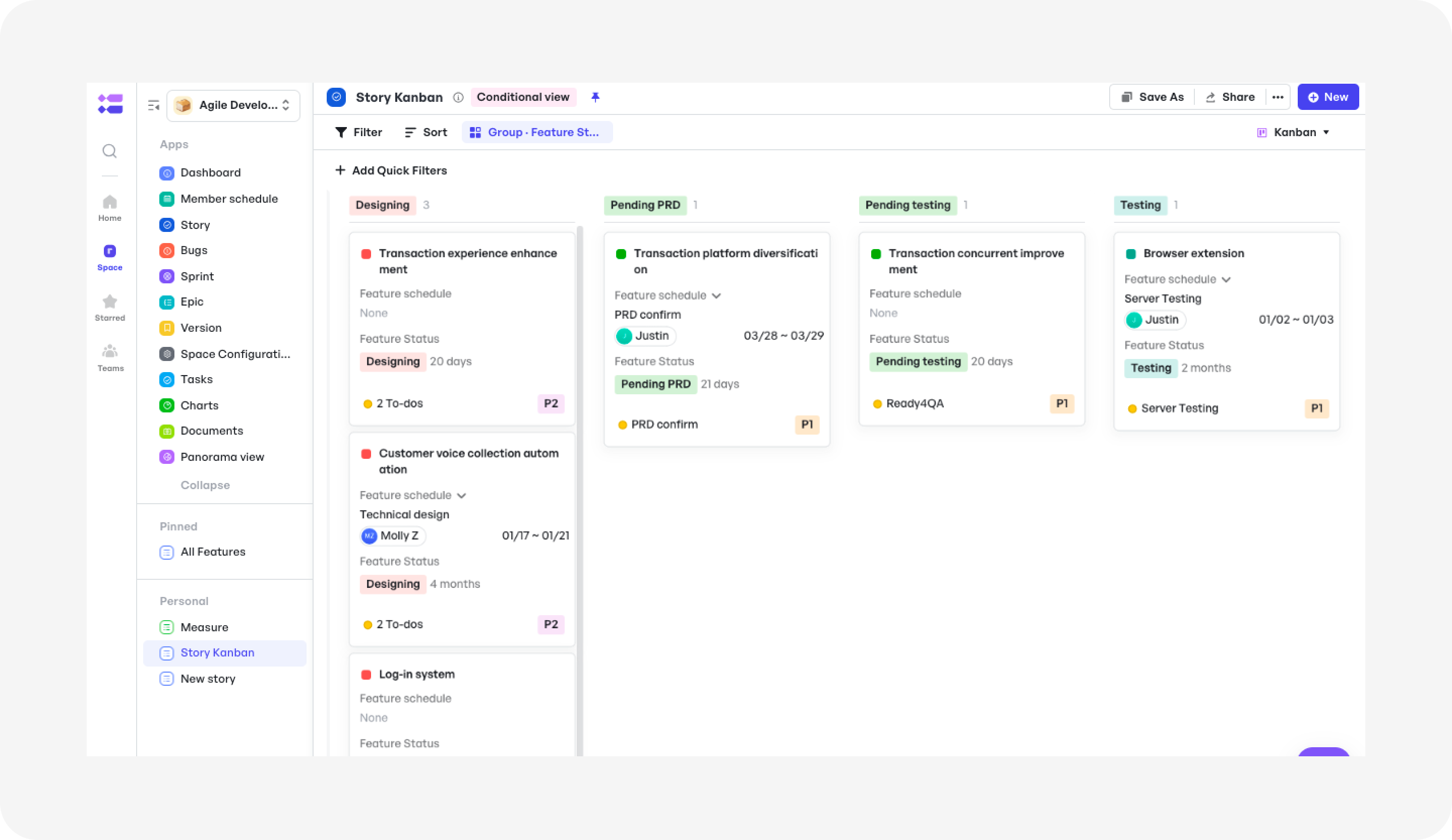 Manage feedback, prioritize backlogs, and create detailed requirement documents with clarity
Manage feedback, prioritize backlogs, and create detailed requirement documents with clarityProduct managers often have to work with long lists of tasks and features to implement. With Meegle’s Kanban view, you can prioritize features, structure your work, and reduce confusion across teams, thereby managing your entire product backlog.
Then, you can sort through user requests, break down tasks, and write detailed requirement documents without switching tools or losing context. This centralized view of tasks and user feedback keeps everyone focused and productive, so that the right features are prioritized at the right time.
4. Dashboards are becoming strategic tools, not just status updates
Dashboards were once static displays of past activity, listing completed tasks, pending items, or deadlines, often lacking context or actionable insights for quick, data-driven decisions.
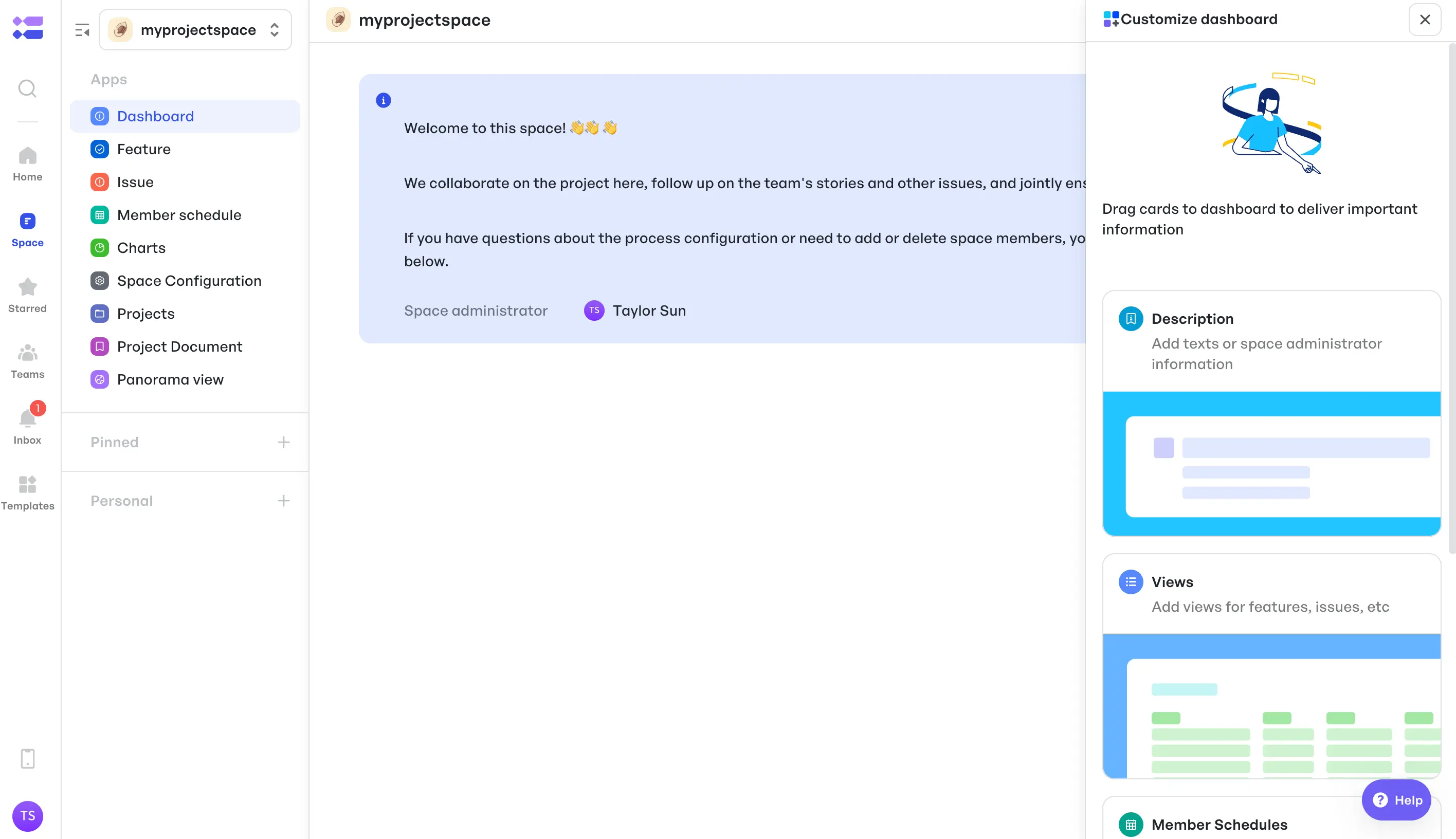 Meegle dashboard
Meegle dashboard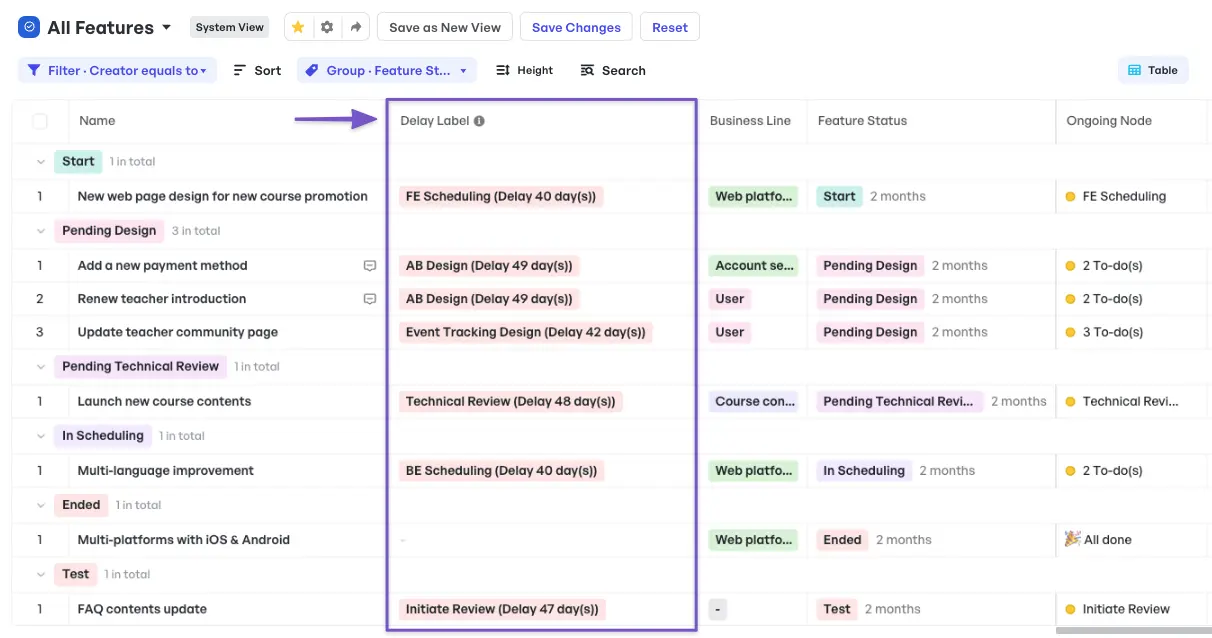 Managing delays in Meegle
Managing delays in Meegle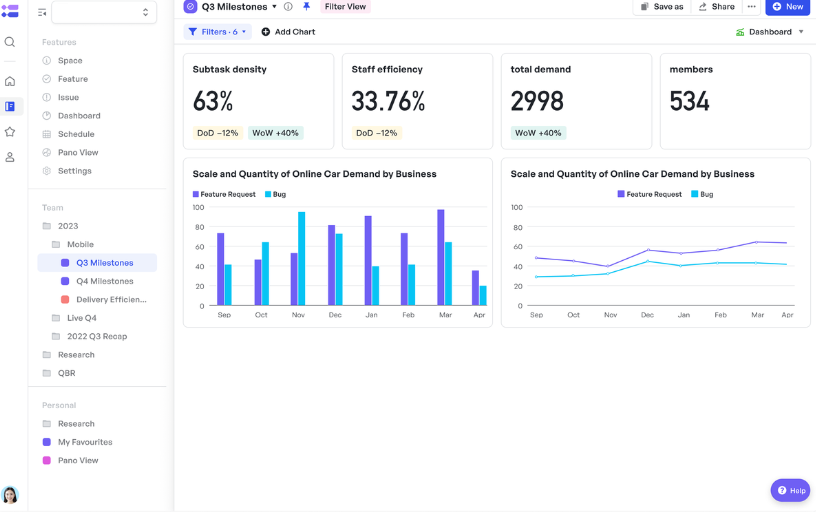 Identify areas of improvement and make strategic decisions
Identify areas of improvement and make strategic decisionsMeegle helps you create charts and dashboards that answer the right questions without wasting time on setup or formatting. You can choose from pie charts, bar graphs, line graphs, and several other formats to visualize key data.
The platform also provides access to dashboard templates that let you plug in data and start measuring what matters from day one. Additionally, you can check sprint velocity, lead time, cycle time, and cumulative flow to monitor team performance across all phases.
5. Cross-functional alignment is now a PM's core responsibility
Cross-functional work now sits at the center of a product manager’s responsibility, not just a supporting task. Teams expect you to keep marketing, design, and engineering moving in one clear direction at all times. You carry the responsibility to keep everyone connected so execution doesn’t break down across departments.
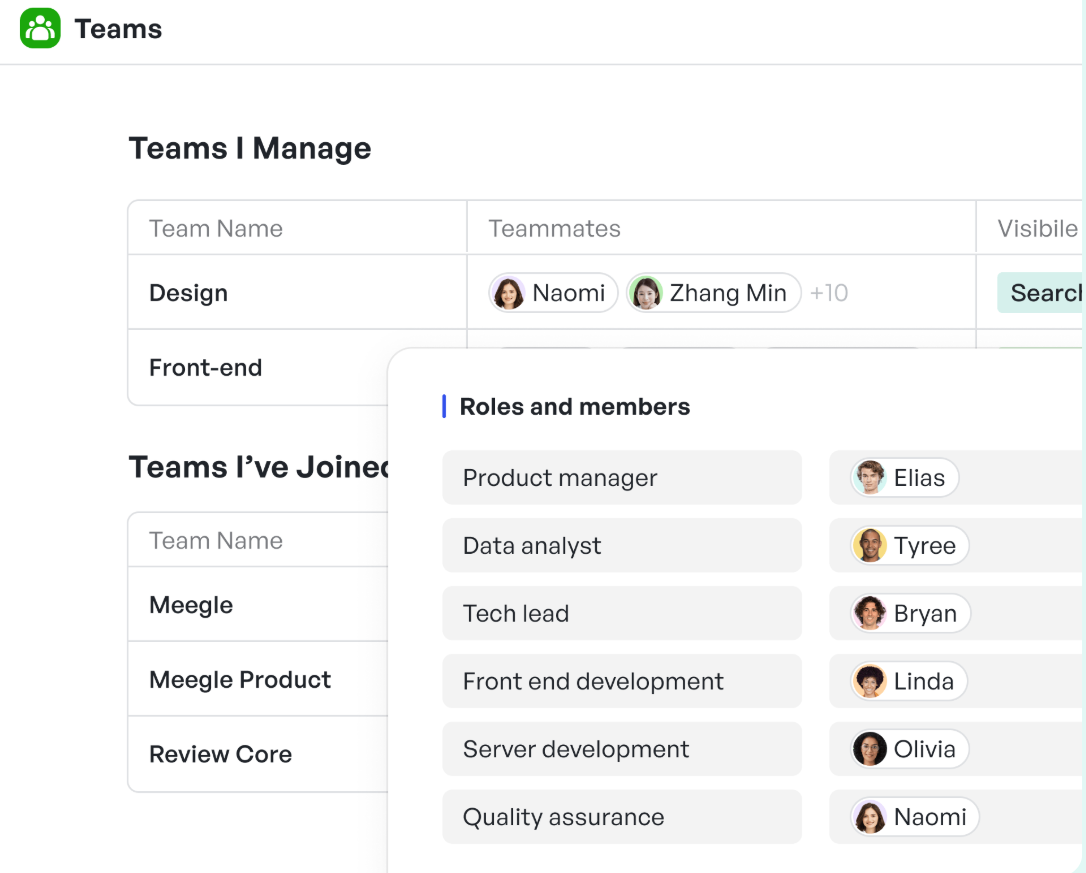 Assign clear roles and responsibilities to every team member
Assign clear roles and responsibilities to every team memberMeegle brings your cross-functional teams into one connected workspace—combining comments, file sharing, task breakdowns, and assignments in a single view. Instead of chasing updates across tools, teams gain full visibility into who’s doing what and how each task contributes to the bigger picture. This clarity helps reduce friction between design, development, and marketing, while promoting faster decision-making and tighter collaboration.
Templates and systems are replacing tribal knowledge
As teams grow, relying on oral handovers or tribal knowledge becomes unsustainable. Information often gets lost, and critical details get lost when shared informally. You need systems that capture and document knowledge so new team members can quickly get up to speed.
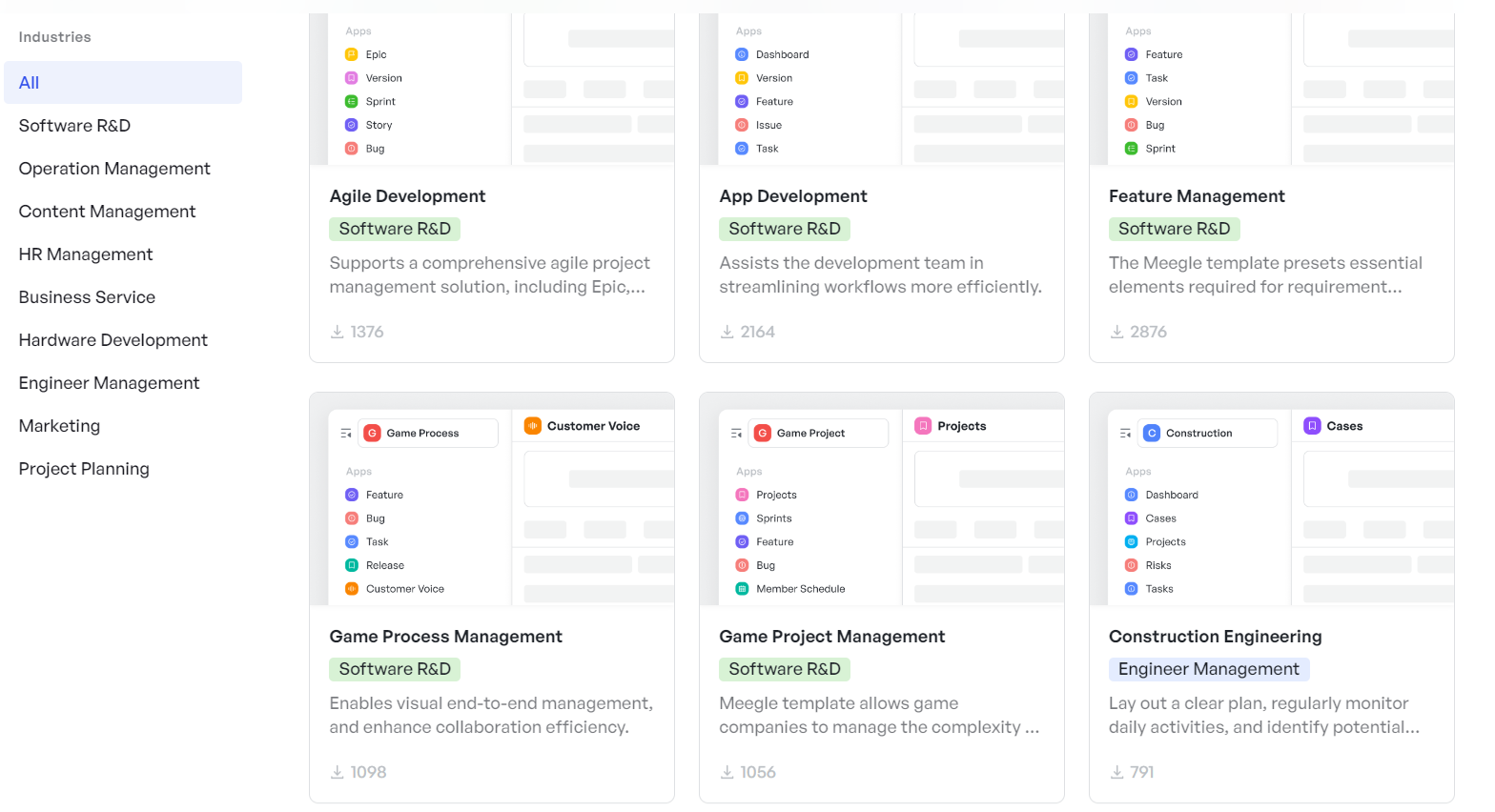 Choose from a set of pre-built templates for a faster transition, from planning to execution
Choose from a set of pre-built templates for a faster transition, from planning to executionMeegle offers templates that help product managers start with best practices already built in. These templates offer clear structures for various tasks and phases, facilitating efficient product management. Instead of depending on someone’s memory, your team follows proven systems that guide every step.
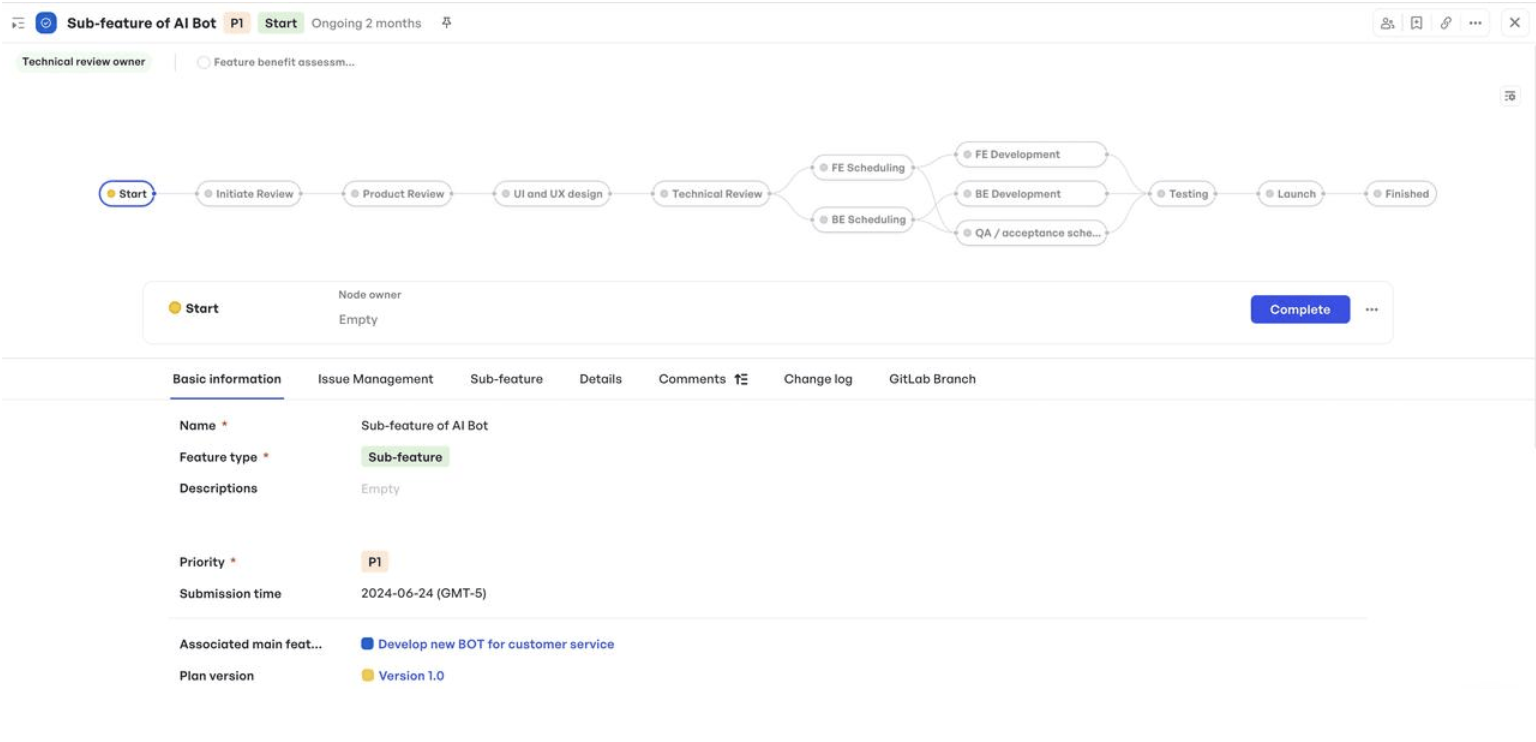 Map out and manage the feature development cycle
Map out and manage the feature development cycleFor example, you can use Meegle’s Feature Management Template for effective product planning. Designed for agile development teams, R&D departments, and project managers, this template offers a comprehensive solution to visualize and orchestrate the feature development cycle. It fosters seamless project collaboration and efficient progress tracking, helping you prioritize features, align teams, and streamline development workflows for faster releases.
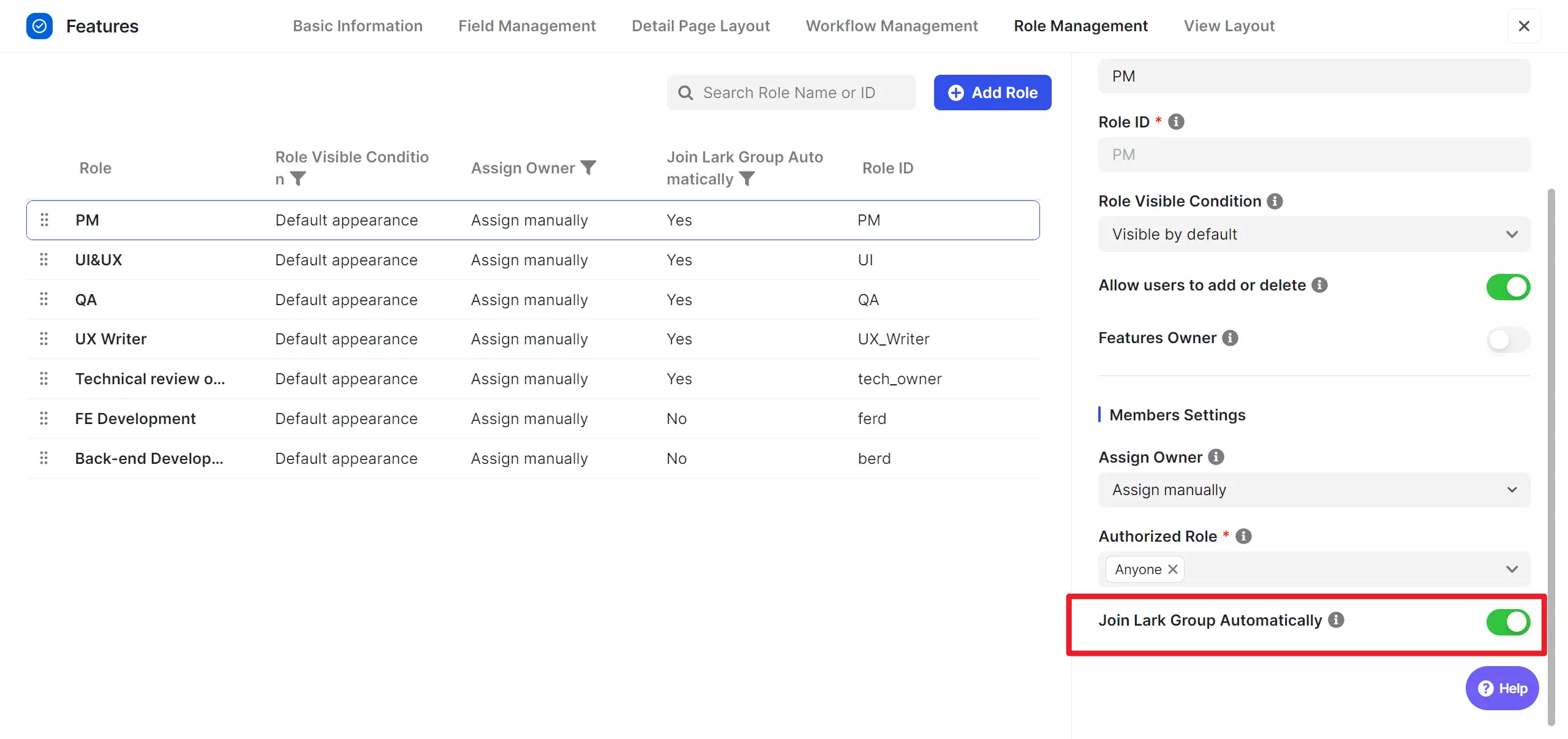 Team management and collaboration in Meegle
Team management and collaboration in MeegleThis way, you can standardize processes across your team, reducing the risk of miscommunication. You can access templates for everything from sprint planning to product roadmaps, giving every team member a consistent framework.
7. AI is helping PMs prioritize smarter, not work harder
Artificial intelligence (AI) has shaped product management since the late 2010s, and its role continues to grow across every stage. AI and Machine Learning (ML) now help product managers gather insights, test ideas, and refine strategies without the need for hours of manual work.
AI reduces time spent on routine tasks, freeing up professionals to focus on high-impact decisions. A recent study by NN Group indicated that AI tools increase productivity by up to 66% through task automation and real-time data insights.
Even with the efficiency boost, backlog management remains a challenge for over a third of product managers. You need more than just automation to stay on top of evolving priorities and shifting team needs. While AI can support decision-making, you still define the roadmap, set the direction, and drive the long-term vision for your product.
To make the most of AI in product management, Meegle’s MCP (Meegle Connect Platform) provides an easy, no-code solution for integrating AI tools directly into your workflows. Using Zapier’s MCP integration, you can connect Meegle’s actions with AI assistants such as ChatGPT, Claude, and Cursor, without the need for complex integrations or managing APIs.
The process is simple:
- Generate a secure MCP URL for connecting your AI assistant to Zapier's integration network
- Choose your Zapier Actions that your AI assistant can perform within Meegle, such as creating work items, modifying values, or changing task statuses, aligning seamlessly with your Meegle workflows
- Connect your AI tool using the generated MCP URL, enabling secure and reliable execution of tasks across your product management workflow
By using Meegle MCP, product managers can ensure that AI supports their workflows without becoming a crutch, helping them prioritize smarter while still maintaining complete control over product strategy.
As AI becomes more embedded in product management, the most successful managers will learn to ask the right questions and audit outputs. They will be able to guide AI and not depend on it.
5 future trends in project management
Looking ahead, several key trends will shape the future of product management. Some of these are:
1. Decision intelligence platforms
Platforms that combine analytics, automation, and context to support smarter decisions. Example: A product team launches a new feature and wants to evaluate adoption. Instead of pulling reports manually, their decision platform automatically flags regions with low usage and suggests targeted in-app messages based on historical behavior.
2. Design-led product strategy
Prioritizing user experience and intuitive interfaces to make products stand out. Example: A team developing a task management tool chooses to focus on clean visuals and minimal clicks. As a result, new users can complete their first task setup in under 2 minutes, increasing activation rates.
3. Platform thinking
Creating a core product that can support add-ons, integrations, and other tools. Example: Instead of building a closed system, a software team designs their tool with APIs and plugin slots so other departments (like marketing or finance) can extend functionality without waiting on core developers.
4. Composable products
Designing products in modular units that can be mixed, matched, or reused. Example: A company developing an internal dashboard builds each chart, table, and filter as separate components. Different teams then assemble custom dashboards by combining only the pieces they need—without writing new code.
5. Product ops as a growth enabler
A dedicated function that handles tooling, data hygiene, templates, and coordination, so PMs can focus on strategy. Example: As the product team grows, a product ops manager sets up a shared template for PRDs, automates reporting dashboards, and handles access to research tools—allowing PMs to work more efficiently and consistently.
How to prepare for these trends with Meegle
Understanding the trends is just the starting point—what really matters next is to audit your team’s current tools and processes. Assess what works well and identify areas where improvements can make a significant impact. Proper expertise and a clear understanding of your current system will help you choose the right tools for future success.
Start by aligning your workflows with the nature of your product development cycle. Meegle supports two types of workflows, allowing you to match the level of structure to the complexity of your work.
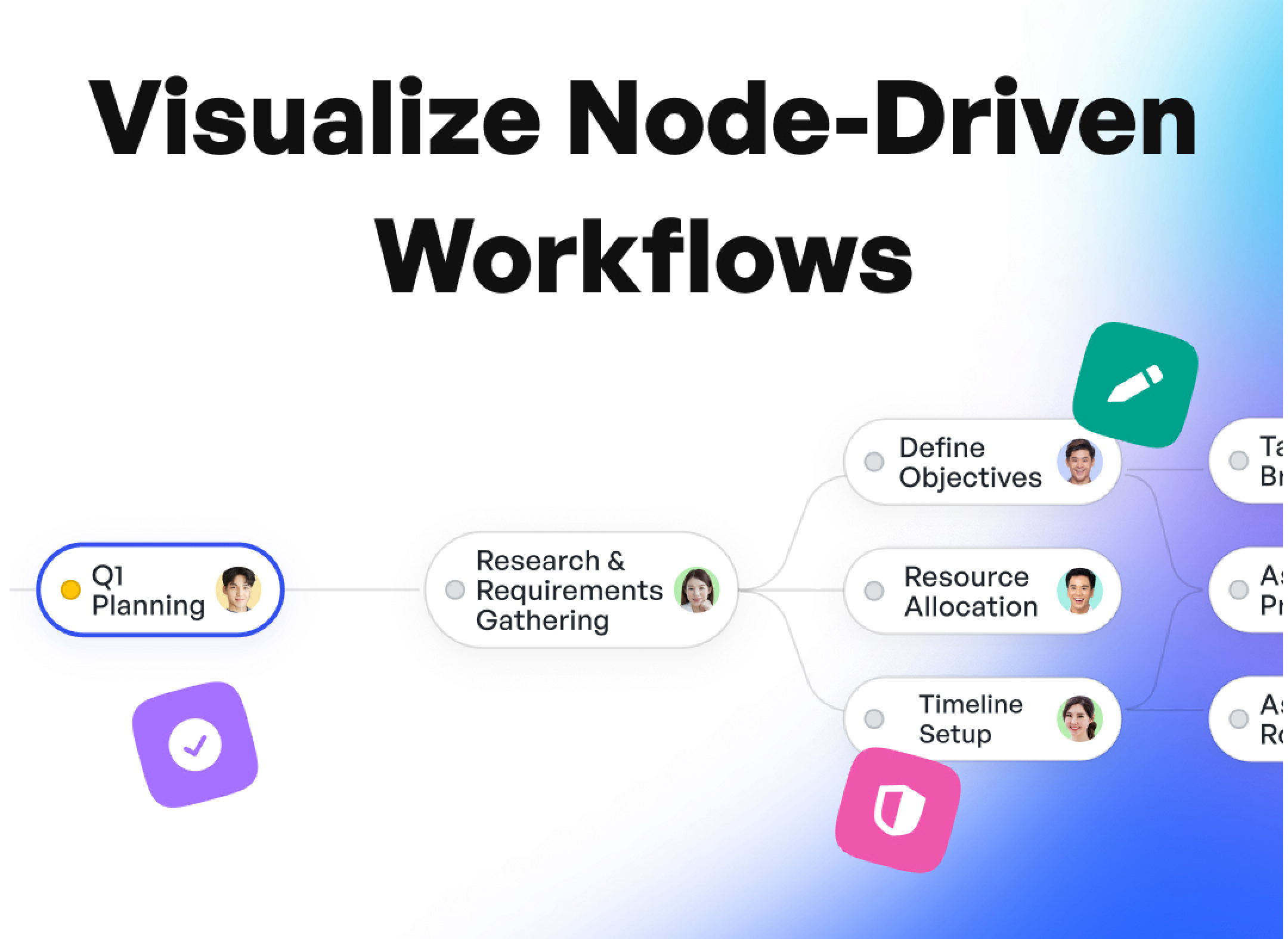 Get a complete picture of the product development lifecycle
Get a complete picture of the product development lifecycleFor initiatives that require sequential approvals, compliance checks, or cross-functional handoffs, such as shipping regulated features or implementing large infrastructure changes, node-driven workflows keep teams in sync by ensuring each step is completed before proceeding to the next. Think of it as moving through defined gates: nothing advances until the current phase is cleared.
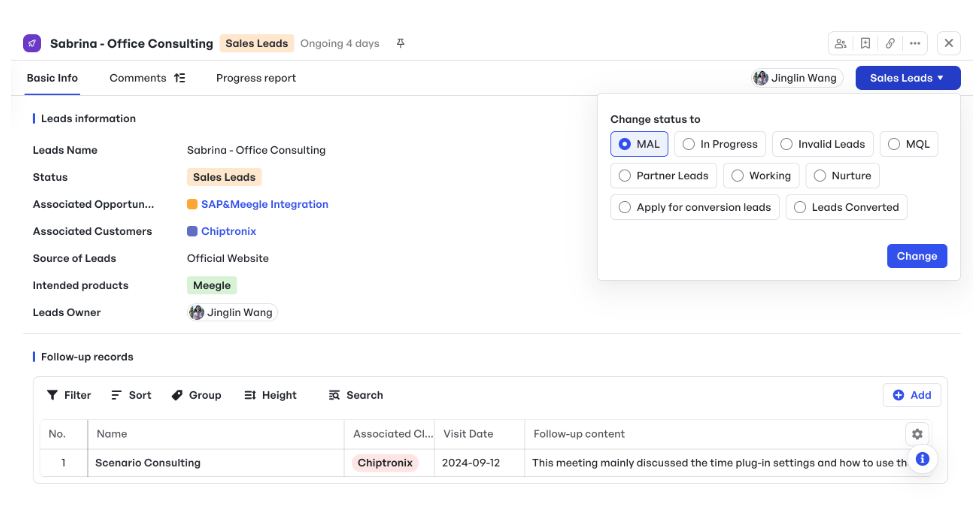 Manage tasks in real time across different stages with status-driven workflows
Manage tasks in real time across different stages with status-driven workflowsFor iterative tasks, experiments, or sprints that demand agility, status-driven workflows offer more flexibility. Work items can transition fluidly between statuses, such as “Backlog,” “In Progress,” “In Review,” or “Done,” allowing teams to quickly pivot, reprioritize, and respond to user feedback.
You can easily switch between workflow types or combine them, depending on the project. Meegle keeps everything centralized with linked documentation, task-level discussions, and real-time updates, so product managers, engineers, and stakeholders are always working from the same playbook.
This level of workflow flexibility helps product teams scale without losing clarity, especially as team structures evolve and the pace of delivery accelerates.
Now, that’s just the workflow part of the deal. However, Meegle is more than that.
Meegle gives you a full suite of visual tools to help your team make smarter decisions with less guesswork. You can create pie, line, and bar charts to track progress and spot trends across your product lifecycle.
These charts are fully customizable and update in real time, so your data is always clear and actionable.
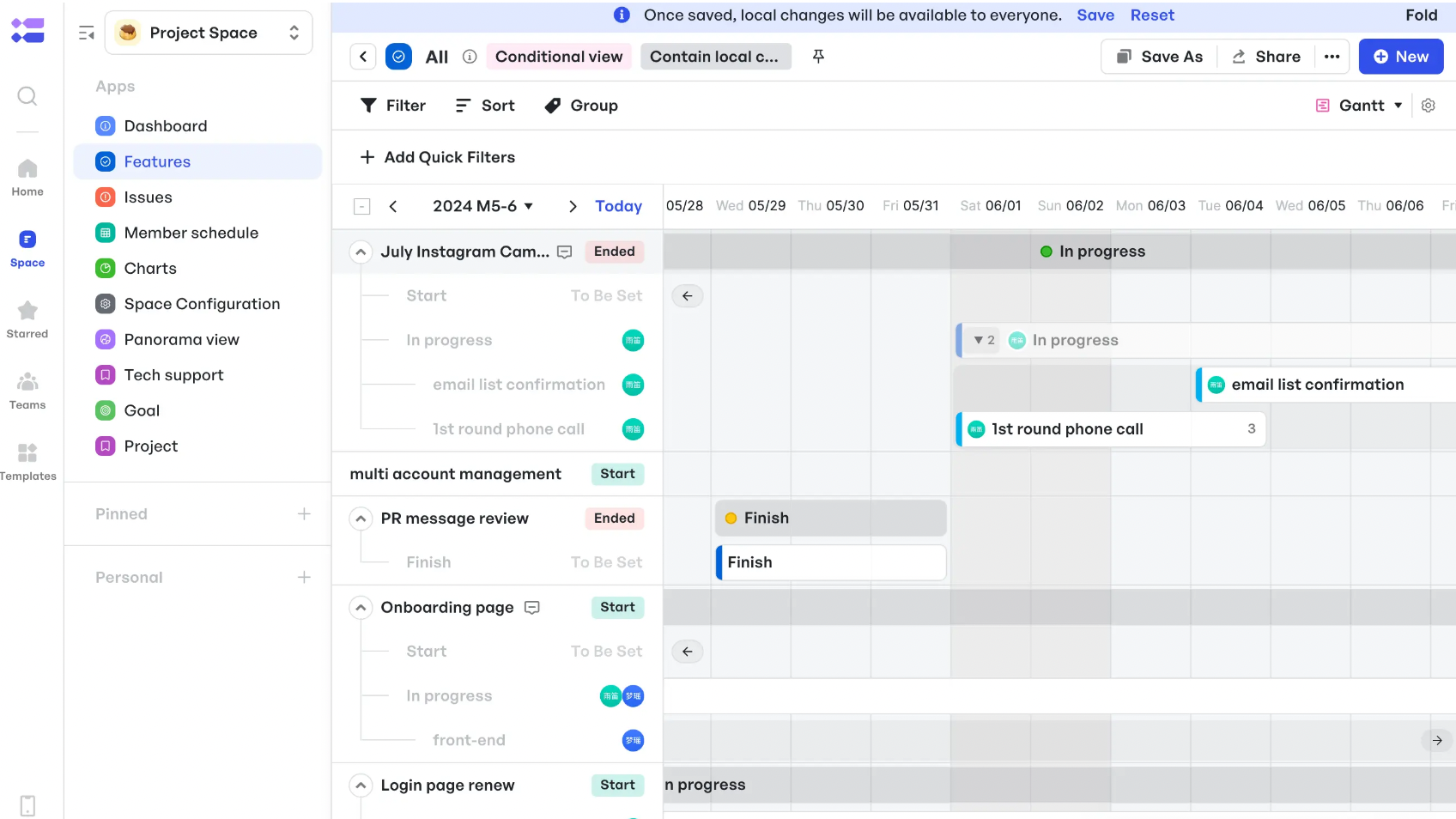 Track time-based progress across your project using a Gantt Chart for a clear view of tasks and timelines
Track time-based progress across your project using a Gantt Chart for a clear view of tasks and timelinesFor example, Meegle's Gantt View displays progress across your work items in a clean, time-based format. It lets you track deadlines, dependencies, and task durations without switching between multiple tools.
To activate the Gantt View, first turn on scheduling for your specific work items, like Sprints, Versions, or any custom item type. Once that’s done, you’ll be able to manage timelines directly inside the Gantt Chart.
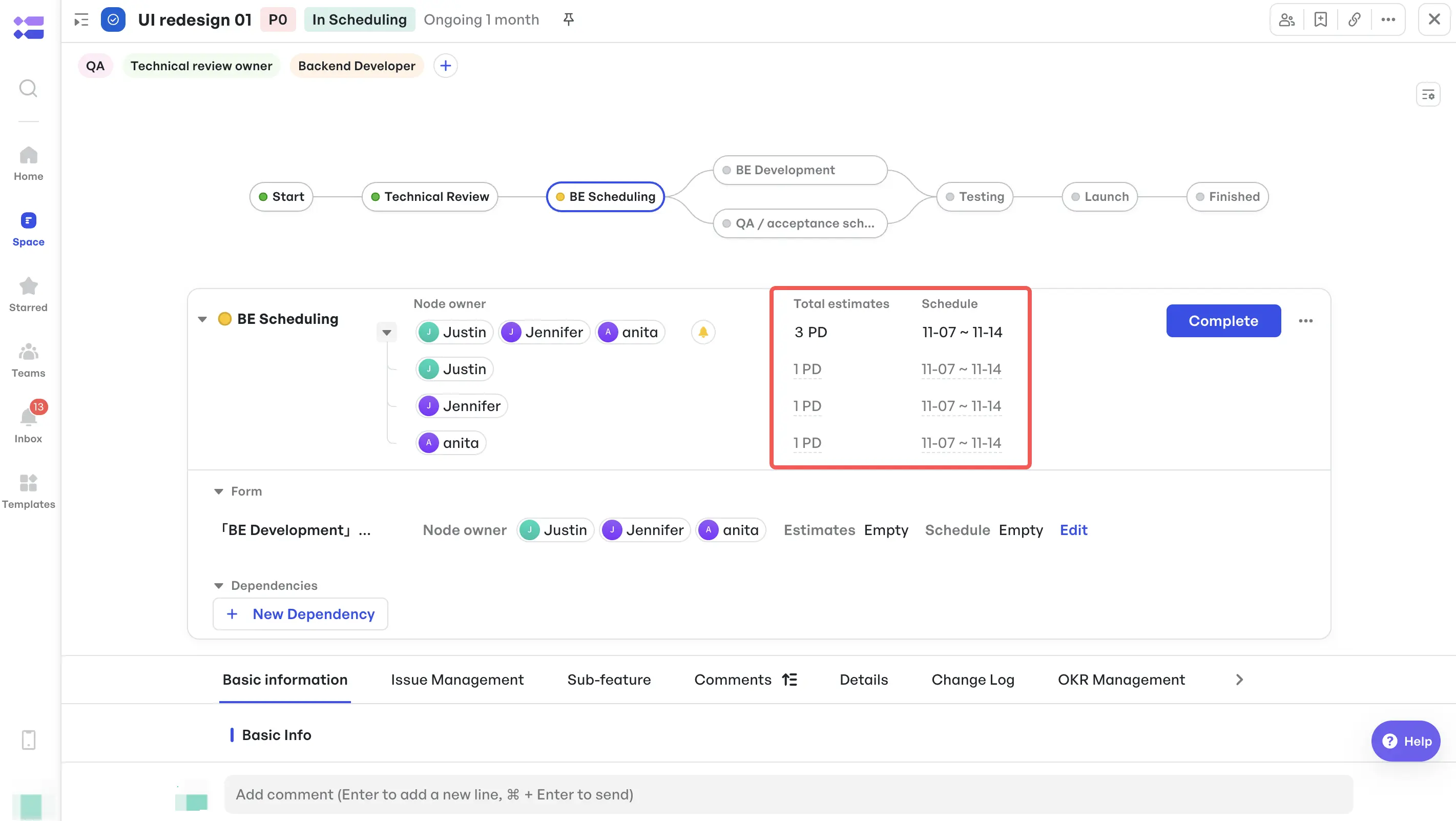 Scheduling in Meegle
Scheduling in MeegleThe chart gives you an immediate understanding of how each item fits into the overall project schedule. You can adjust deadlines, identify blockers early, and keep delivery on track without losing visibility.
Meegle’s scheduling features bring added clarity to teams managing high-stakes or time-sensitive projects. They give product managers the structure they need without limiting flexibility.
While scheduling brings clarity, communication keeps everything moving.
 Meegle integrations
Meegle integrationsMeegle integrates with Slack, Zapier, and Lark to maintain steady, real-time updates across your team. These integrations cut down on manual check-ins by automatically notifying team members and surfacing important changes as they happen.
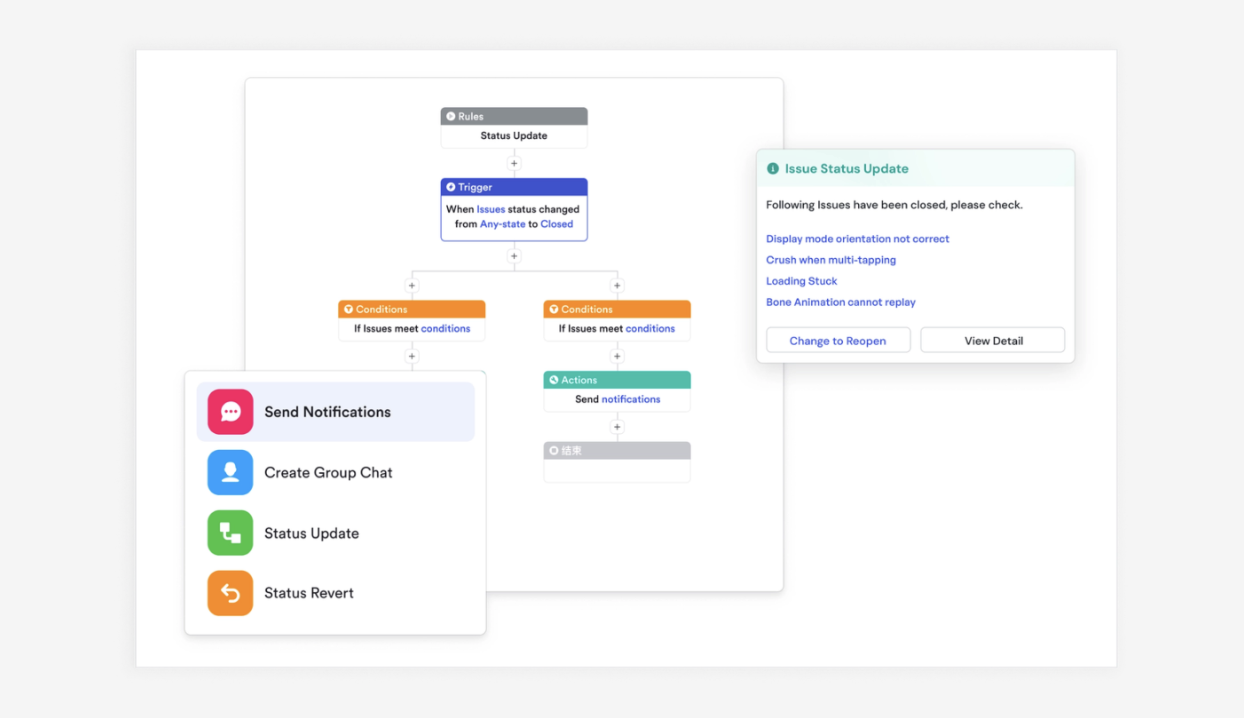 Keep stakeholders informed and collaborate with them via centralized dashboards
Keep stakeholders informed and collaborate with them via centralized dashboardsA stakeholder message can trigger a follow-up task, loop in the right team members, and track updates across platforms.
For development teams, Meegle’s GitLab integration keeps technical tasks aligned with broader product goals. In industries like marketing, healthcare, or construction, feedback flows directly into project pipelines, so internal teams stay aligned with external.
Even with strong communication and planning, projects can stall if the right people aren’t available at the right time. Meegle’s automation tools keep your team focused on critical tasks that drive product success. When a team member is unavailable, Meegle ensures that workflows continue seamlessly, reducing the need for manual intervention and minimizing errors.
With Meegle, you can automate tasks like:
- Sending notifications or approvals automatically after task completion
- Generating regular reports and analytics with no manual effort
- Assigning tasks based on team availability or specific criteria, ensuring the right people are always on track
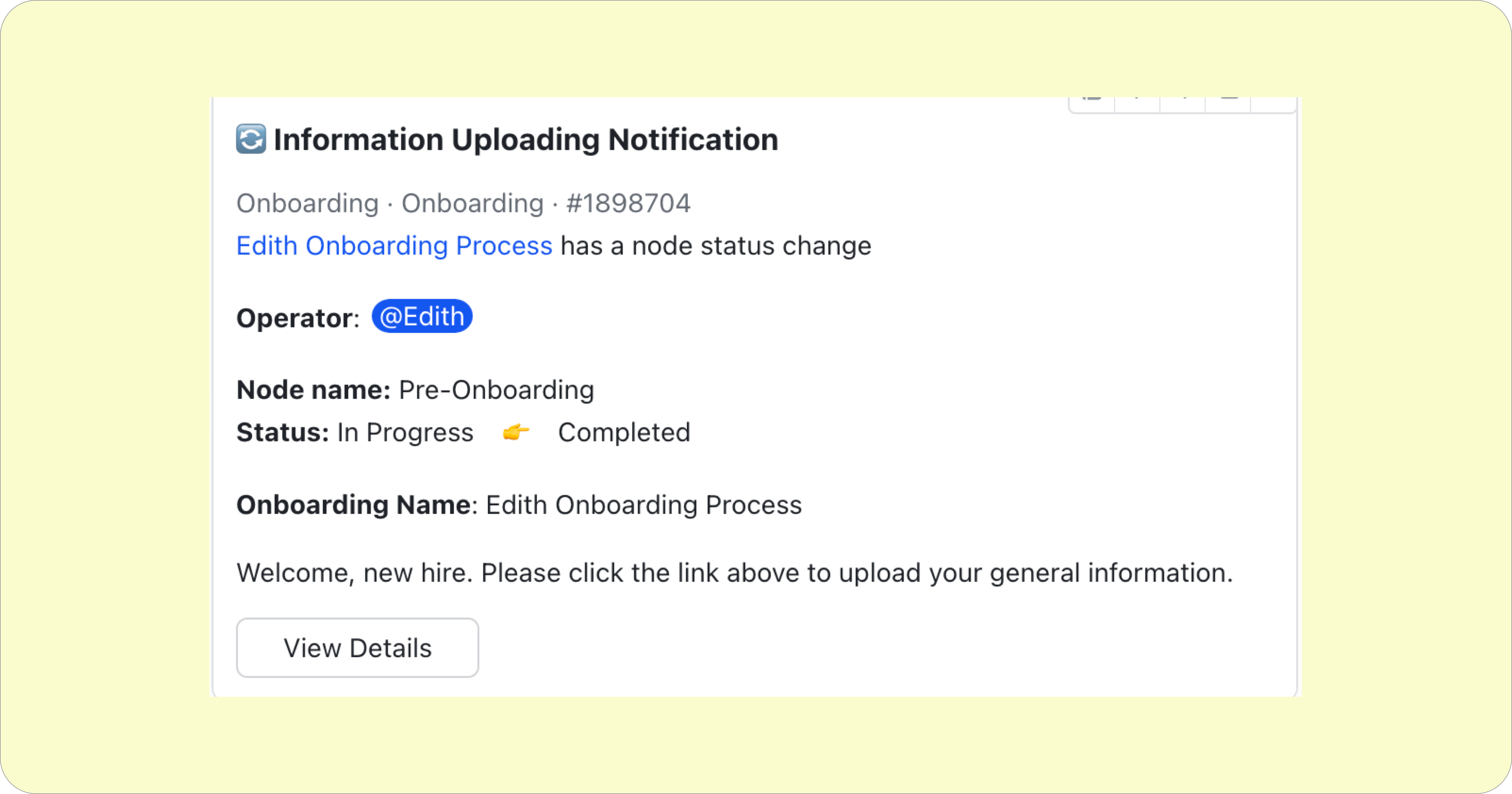 Automatically send notifications or approvals when tasks are completed
Automatically send notifications or approvals when tasks are completedThese automations streamline operations and keep everything running smoothly, even when team members are absent or priorities shift.
As mentioned earlier, you must focus on alignment and outcomes, in addition to delivery. To do this, drive your team to work toward shared objectives that create real value. Keeping the focus on outcomes ensures that every decision and action contributes to your long-term product goals.
Looking ahead, several key trends will shape the future of product management. The rise of decision intelligence platforms will empower teams to make data-driven choices at scale. Design-led product strategy will become crucial as companies prioritize user experience to differentiate in competitive markets. Additionally, platform thinking and composable products will lead the way in creating adaptable, modular systems that allow for rapid innovation and customization.
Not just reading about trends, ready to act on them? Start with Meegle
FAQs
What are the key skills for a product manager?
Product managers need strong data-driven decision-making skills, a deep understanding of user needs, and the ability to lead cross-functional teams. They must be agile, adaptable, tech-savvy, and capable of balancing strategic vision with real-time execution to drive product success and innovation.
Why do agile practices matter in today’s product management landscape?
Agile practices allow teams to adapt quickly to new data or changes in user preferences. They enable continuous delivery of value and foster collaboration, improving a product's ability to meet evolving demands.
How can I stay current with product management trends?
To stay current with product management trends, regularly read industry blogs, attend webinars, and participate in PM-focused communities. Follow thought leaders on social media, join relevant LinkedIn groups, and attend conferences to network with peers and experts. Continuously learning and adapting is key.
Can AI tools replace human intuition in product management?
While AI provides data-driven insights and automation, it can't replace human intuition. PMs must still contextualize AI outputs with their expertise to make high-stakes, strategic decisions.
The world’s #1 visualized project management tool
Powered by the next gen visual workflow engineRead More
Check All BlogsStart creating impactful work today



